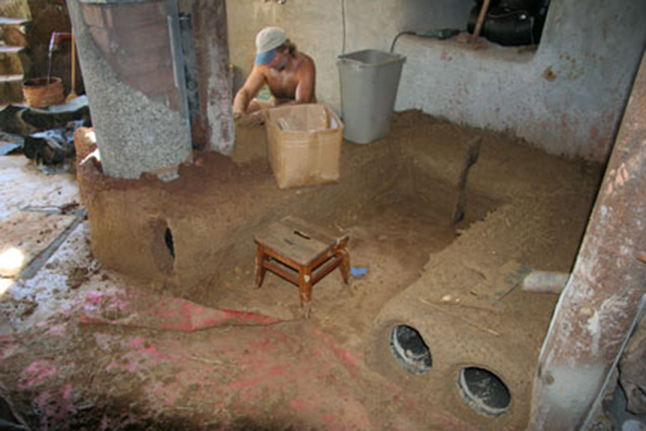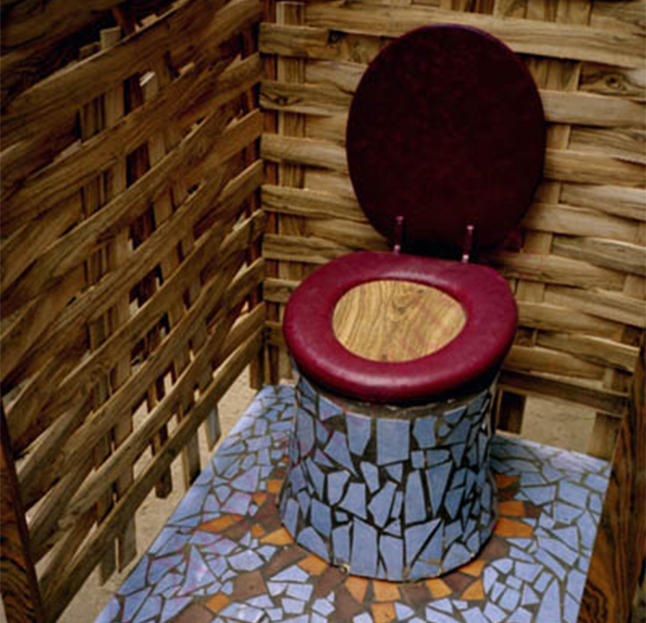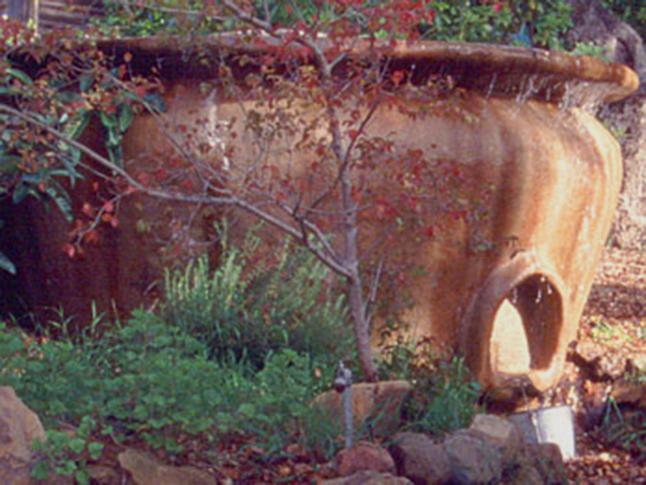We’re running out of water. The Ganges, Yellow, Yangtze, Indus, Brahmaputra, and Mekong rivers collectively irrigate the food crops for nearly a billion people. The glaciers that have fed them for eons are rapidly melting. Within a lifetime, these rivers are projected to be seasonally dry.
A similar issue affects rivers fed by snowmelt in California, America’s fruit basket. The Ogallala aquifer supplies 30% of the groundwater used for irrigation in the United States. But it is “fossil water” from the last ice age, and it’s being extracted at 100 times the replacement rate. Even places that don’t have water-quantity issues have water-quality issues or are connected umbilically to places that have both.
Meanwhile, we’re living fat on the drawdown of this resource, and water isn’t the only natural capital we’re squandering. In our lifetimes, we will see not only peak oil and water, but also peak just about everything else, including clean air and topsoil. To deal with these emergent risks, we must learn to live on fewer resources, and utilize them with much more efficiency and care.
Why flush resources down the drain?
1) Build Small, Live Large
First and most important, we need to build smaller and for the long vision. A small home well crafted to last for centuries uses a fraction of the resources of a big house designed for a one-act play: the sale. The most concentrated flow of money, materials, energy, nutrients, and water is through our kitchens and baths. The best way to leverage our impact is to start with them; smaller kitchens and fewer bathrooms consume fewer resources in their construction, maintenance, heating, cooling, and lighting. Good design matters more than size. Would we rather live in big boxes that separate us from our well-being and communities, or smaller boxes that give us more room to live bigger lives outside of them?
Size and number aside, what makes our kitchens and bathrooms so wasteful are the resources that we literally throw down the drain (or into the garbage). The nutrients and water flowing through a typical kitchen and bath are enough to fertilize a densely planted suburban lot and to irrigate a quarter of it. But instead of banking this natural capital in the soil outside our homes, we pollute waterways with it—and we spend money and even more resources to do so. We need to rethink the flow of these resources through our homes. It is entirely possible to develop systems that yield a higher quality of life than the average American currently enjoys, with one- or two-tenths of the resource use, while providing food for our families.
2) Buy Less Water, Catch More
The first question about any human habitation is: Where does the water come from? In Santa Barbara, Calif. (where I’m writing this), our municipal water supply comes from fairly clean surface- and ground-water, but for various reasons, it makes sense to back this up with rooftop-harvested rainwater.
My ideal house would have a pair of attractive, urn-shaped ferrocement cisterns sitting under the lowest gutter. Ozone-purified rain from the roof fills them several times over, supplying enough water to meet a family’s needs in the rainy season. (Drinking water, by the way, could still come from the city.)
In the dry season, the house switches to city water, but the cisterns remain for emergency needs after an earthquake or during a wildfire. In hot weather, one cistern even serves as a cold plunge, so residents can cool off without the cost and complexity of a swimming pool. Worldwide, people with running water use an average of 100 gallons per day to accomplish the same tasks that people who carry water achieve with 10 gallons. We need to get some of the efficiency motivated by carrying water, without carrying it. Anything that increases awareness of consumption and makes conservation easy is a step in this direction. My ideal kitchen would have a water meter in the backsplash behind the kitchen sink (along with remote electricity and gas meters), which places resource-use information where it can be acted on (like the mpg dashboard readout on newer cars).
Foot-actuated valves in the kitchen and bathroom sinks let people start and stop the flow while their hands are busy, lowering water use and keeping chicken slime and other pathogens off the faucets. Over the kitchen sink, an attractive Tuscan-style dish rack stores and air-dries dishes so efficiently that there is no point in having a dishwasher. A capped chute by the sink leads to a compost bin outside. A third tap at the kitchen sink, with a reverse-osmosis filter, provides tasty drinking water, eliminating the need for bottled water and its associated costs to the environment.
Water flows from solar panels on the roof to highly efficient bathroom fixtures, including a bathing chamber redesigned for comfort and efficiency. Bathers need only a small amount of water to get clean, but typically use a lot of hot water to keep from getting cold. Meanwhile, most of the energy ends up warming drainpipes and fogging windows. The redesigned bathing chamber is highly insulated and designed to reduce heat loss by convection, conduction, and radiation.
3) Instead of Overdrafting Your Account, Make Deposits in Your Nutrient Bank
In my ideal house, there is no sewer connection. Water cascades between uses, starting inside with those requiring the clearest water and ending outside where topsoil organisms and plant roots filter pathogens and feed on nutrients. The drain beneath the kitchen’s filtered third tap flows to a water feature before heading outside to help irrigate vegetables. Discharge from the washing machine directly irrigates fruit trees, which yield shade and privacy in addition to fruit.
Other gray water (from sinks and showers) discharges into mulch-filled basins before irrigating fruit and ornamental trees. Any excess irrigation recharges the groundwater.
Black water (from the toilet) flows to a green septic system, which disseminates effluent in a controlled way to fruit-tree roots. If the homeowners are really committed, I would substitute a composting toilet and eliminate the need for a septic system to reduce household water use further.
A house in which the water, waste-water, energy-, and food-production systems are designed simply and synergistically would cost less than conventional practice, especially over time, and even more so when external costs are accounted for. Waste is expensive. If your accounting is complete, the most ecological solution is always the most economical, too.
4) Legalize Sustainability
Why aren’t we all getting healthy on fruit from Eden-like gray-water gardens? Well, we’re not allowed, at least in most parts of the United States.
Even as all of humanity’s life-support systems are threatened, the more ecologically you live, the more illegal it is. In Santa Barbara, 20,000-sq.-ft. mansions are approved routinely, but living in a yurt is illegal. You can build an entirely passive-solar and wood-heated house, but the law also requires a fossil-fueled central-heating system. If a sewer passes the house, you must hook up to it, and pay for the privilege.
Our plumbing codes evolved to protect us from 19th-century risks. Certainly, we still need plumbing that won’t spread cholera. But while codes work hard to reduce the risk of disease from minute to infinitesimal, they miss the big picture. If we do not change our built environment to address global warming, aquifer depletion, and groundwater contamination, cholera will seem welcome by comparison.
A good start would be for all states to emulate Arizona’s three-tiered approach to regulating gray water. No permit application is required for systems under 400 gallons per day (GPD) that meet a list of reasonable requirements. Systems over 400 GPD, or that don’t meet the requirements, need a permit. The third-tier systems, over 3000 GPD, are considered on an individual basis.
But gray-water approval is just one component. We also need experimental permits that allow people to develop unhindered the kind of “lifeboat” systems that I’ve described here. We need to encourage research and gain more experience with resource-efficient systems now.
Although I have focused here on our dwindling supply of water, the real problem runs deeper. It’s a culture in which the looting of natural capital from ours and future generations is institutionalized, encouraged, and even legally mandated. For an orderly transition to a post-peakworld, we need to take actions that increase stores of groundwater, fertile soil, clean air, trees, and more. Our lifestyles have to change, but I’m confident that we can still enjoy our lives, and perhaps even more so than we are now.
To learn more and get hands-on experience with Art, sign up for our permaculture action course.
Art Ludwig is the author of Principles of Ecological Design, Water Storage, and Create an Oasis with Greywater. His Web site is www.oasisdesign.net.
References
Peak Water
- Plan B 3.0—Lester Brown, Worldwatch Institute
Peak Everything
- The Party’s Over—Richard Heinburg (Amazon)
Build smaller
- Can a 4000 ft2 Home be Green?
Context, connections
- Principles of Ecological Design (article): Integrating Technology, Economics and Nature
Water systems
- Attractive Ferrocement Urns: Water Storage (book)—see cover shot
- Coliform measurements
Relative Water Use
- Residential water end use study
- Navajo Indians without running water use 10-15 gallons per capita per day
Remote Meters
- You should start a business to make them.
Skylights
- A proven, common technology.
Foot actuated valves
- You should start a business to make them. They should be master valves, continuously adjustable, with the hot and cold adjustments on the sink. The foot-actuated valves I know of in the US are binary off/on only. In Italy these are common in public restrooms.
Compost chute
- Is unproven, so far as I know, but there’s no reason it shouldn’t work that I can see.
R/O Cascade
- A proven, uncommon technology. You can plumb this with small diameter HDPE tubing, without worrying about slope, as there are low suspended solids in the clear water. It would have to be protected from freezing. It’s fine for fish and veggies; just 25% higher TDS than the tap water.
Tuscan Dish rack
Lavori del Contadini (book)—an encyclopedic account of indigenous Italian crafts. According to one reader: ” To the best that I can determine, they’re only available [in the U.S.] if you purchase the entire cabinet (e.g., Snaidero; Art et Maison’s Toffini kitchens; Newberry Kitchens’ Frighetto, Altamarea, and Copat Kitchens; Alno; Maistri; Valcucine). Arclinea told me they would only sell me the whole kitchen! I sent a letter to Vibo but never received a reply. And, the Buller Limited website says they’ll sell to customers in the USA (they have pictures and information on exactly what I want), but they have not responded to my e-mail inquiry or to letters I subsequently sent.”
Water cascade
- Residential Water Reuse—Murray Milne (out of print)
Greywater systems
- Create an Oasis with Grey Water (book)
- Builder’s Grey Water Guide (book)
- Diverter Valves (hardware)
Green Septic
- This is a new system with short track record, but very promising.
- Removal rates of land treatment facilities (CIF graphic, large file)
- Green Land-Clean Streams: the Beneficial Use of Waste Water Through Land Treatment. Center for the Study of Federalism, Temple University, Philadelphia, Pennsylvania 1972. An analysis of large scale land treatment facilities. Currently out of print, but photocopies are available. Summary table of treatment effectiveness, which is amazingly high, even for overland flow.
- The World Health Organization on pollution plumes from dry pit toilet (CIF graphic, large file)
- The World Health Organization on pollution plumes from pit toilet in groundwater flow (CIF graphic, large file)
- Wagner, E. and J. Laniox, Excreta Disposal for Rural Areas and Small Communities. Monograph #39, The World Health Organization, Geneva, Switzerland 1958 (reprinted 1971). Information and diagrams about the effectiveness of soils for containing and processing nutrient and pathogen contamination from human feces, as well as other technologies.
- Earth toilets
- Clivus Mulstrom Composting Toilets
Furo
- Common in Japan.
Wood Burning Bathtub
- A proven, underutilized technology for brush disposal and endless hours of luxurious bathing. Design needs work for emissions reduction but is probably better than open brush pile burning as is.
Fruit trees
- C’mon…you’ve heard of these! Evergreen trees are preferred for eating wastewater. Design your edible landscape naturally.
True cost accounting
- Learning to Count What Really Counts—Tom Bender (Amazon)
Context
- Principles of Ecological Design (article)
- A Pattern Language—Christopher Alexander (Amazon)
Attached Greywater Greenhouse
- The Food and Heat Producing Passive Solar Greenhouse—Fisher & Yanda (out of print but available used on Amazon)
Code Barriers
- Development Center For Appropriate Technology
- Art’s Legalize Sustainability presentation to the Portland, OR City Council
See also:
- Complete, full-length Eco Home Checklist (pdf)
- Greywater Stub outs—every project should include these
About Art Ludwig
Art Ludwig is an ecological systems designer with 33 years full-time experience in water, wastewater systems, energy, shelter and human powered transport. His specialty is complex, integrated “systems of systems.” Art has studied and worked in 22 different countries, attaining fluency in 5 languages. He has consulted for the states of New York, California, and New Mexico on water reuse policy and building codes, and given dozens of lectures and workshops. He has developed numerous innovations which have been adopted worldwide, incorporated in building codes, etc., all of which he has published into the public domain.
He designed his own education in Ecological Systems Design, graduating from UC Berkeley. At Berkeley, he developed the first cleaners specifically designed to be biocompatible with plants and soil, and founded a successful business to manufacture and distribute them. Art has authored numerous articles (including one on water testing procedures) as well as the books “Water Storage” “Principles of Ecological Design,” and “Create an Oasis with Greywater.”
The past several years Art has dedicated approximately a thousand hours a year to public interest research and activism.







A great rule to check out for the amount of water
you may need daily is drinking half one’s body
weight in ounces of water each day. The more salt you eat, the
greater the body retains water to dilute it. A easy way to start paying more attention to your eating routine is
to start keeping a day-to-day food diary.